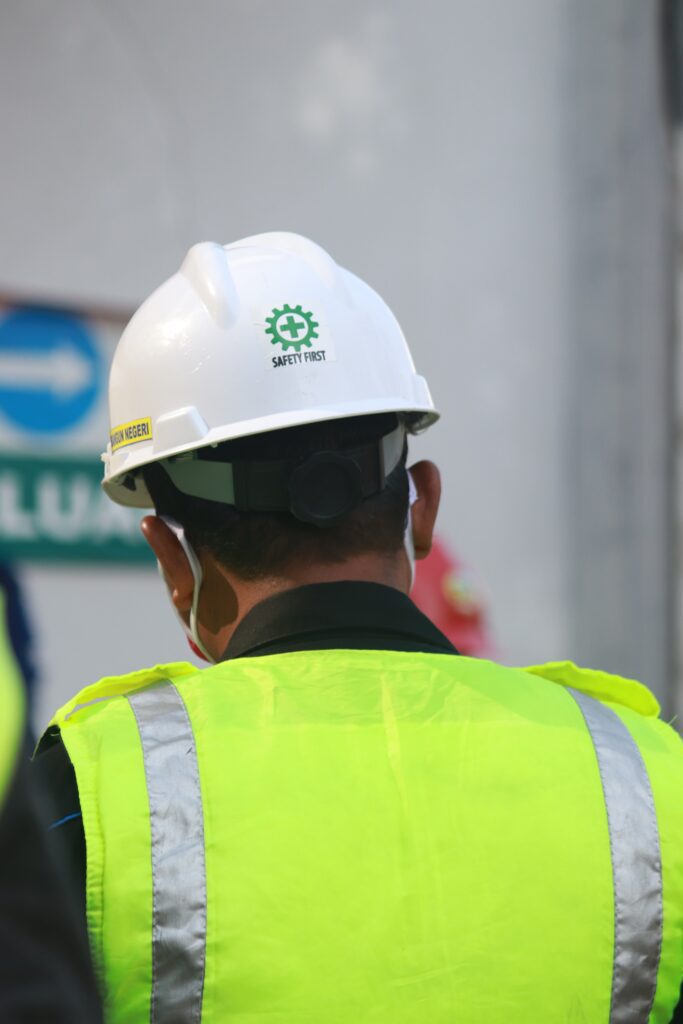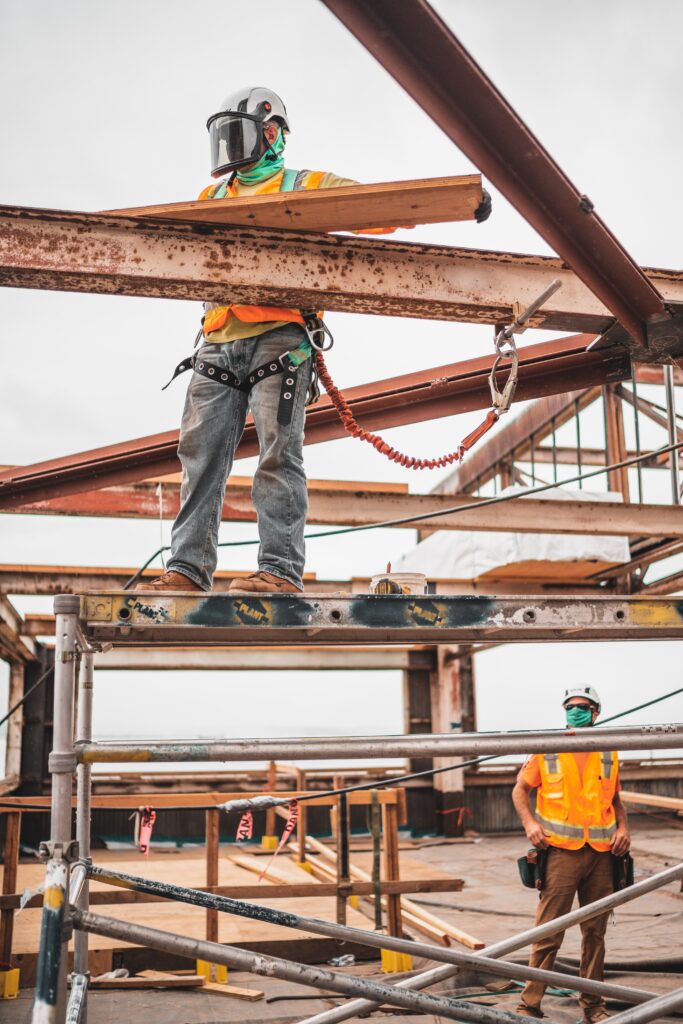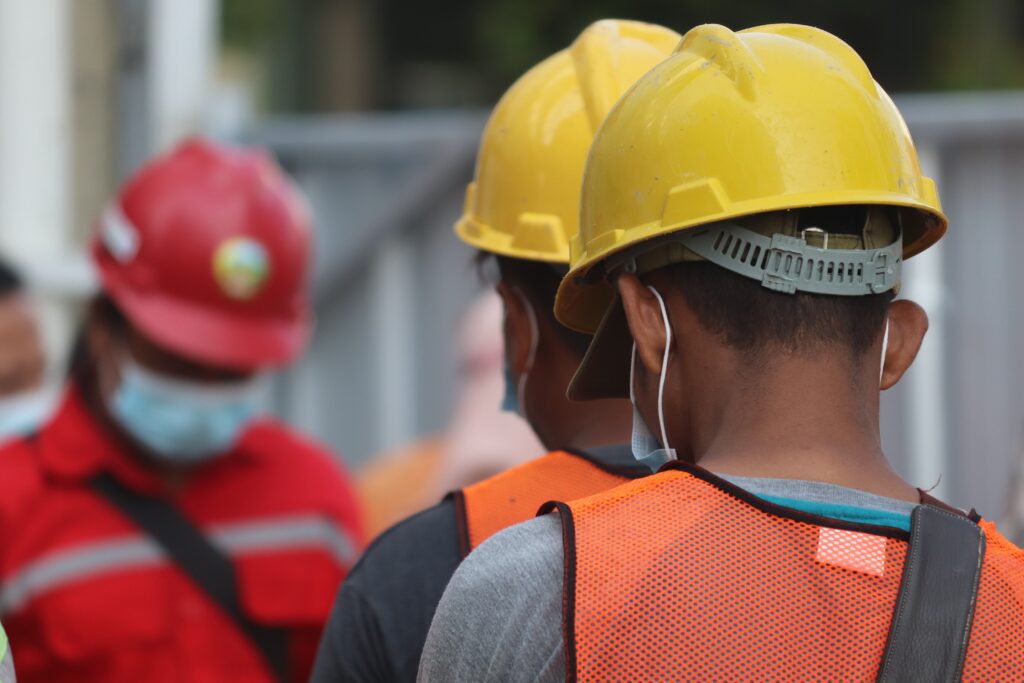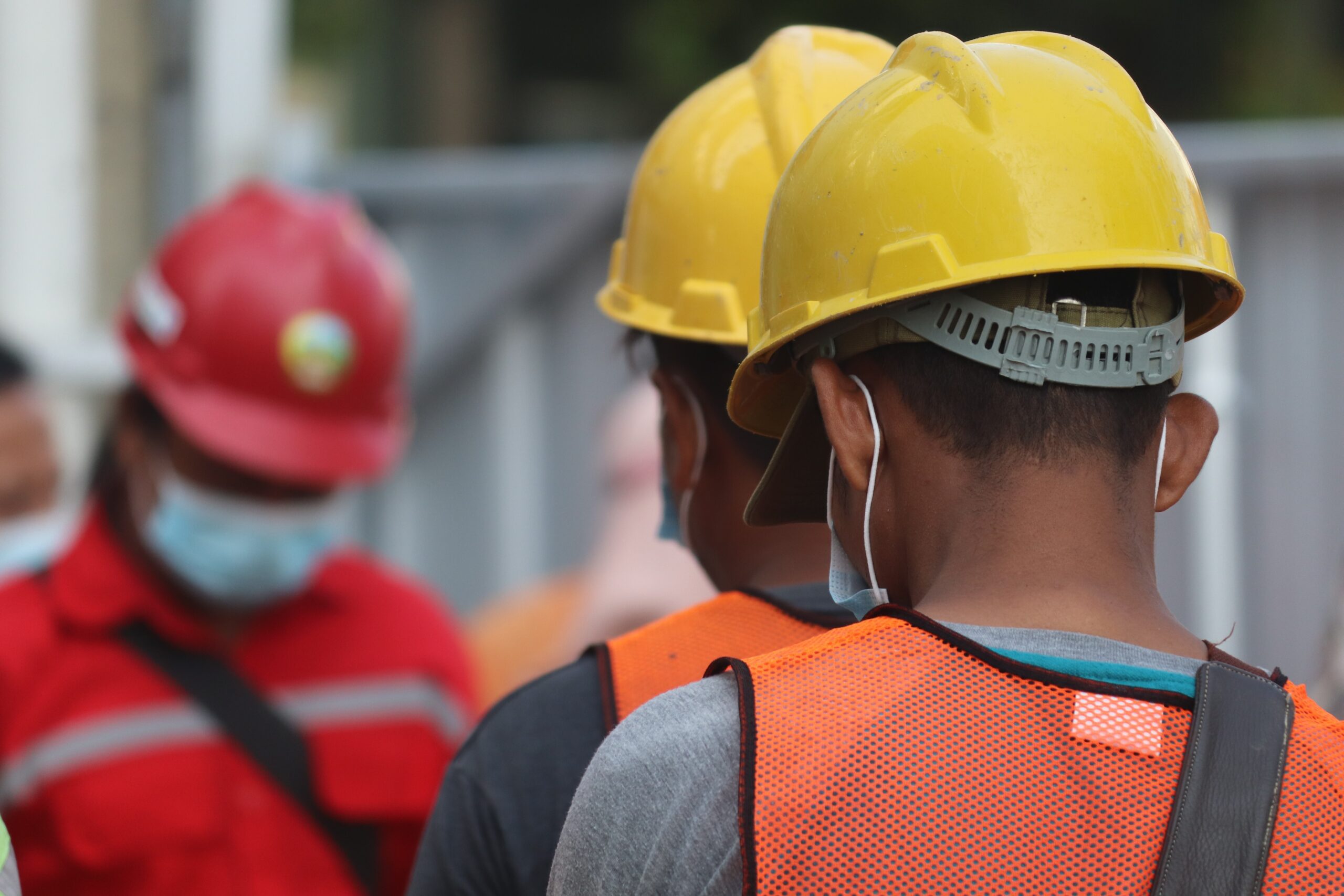In this article, I will be discussing the PPE guidelines for industrial workshop workers. Personal Protective Equipment, commonly referred to as PPE, plays a crucial role in ensuring the safety and well-being of workers in industrial workshop environments. It consists of various protective gear and equipment, including helmets, gloves, safety glasses, and respiratory masks, designed to minimize the risks associated with hazardous work conditions. Throughout this article, I will explore the importance of PPE, highlight the key guidelines that workshop workers should adhere to, and emphasize the significant impact of proper PPE usage on both individual and collective safety.



This image is property of images.unsplash.com.
Understanding PPE in Industrial Workshops
Personal Protective Equipment (PPE) refers to gear or equipment worn by individuals to minimize exposure to occupational hazards, ensuring their safety and well-being in industrial workshops. PPE acts as a protective barrier between the worker and various workplace hazards, such as chemicals, flying debris, extreme temperatures, and excessive noise. Understanding the significance of PPE in workshops is crucial for maintaining a safe working environment and reducing the risk of occupational injuries and illnesses.
Definition of PPE
PPE encompasses a wide range of equipment that aims to protect different parts of the body from potential hazards. This includes items such as safety glasses, face shields, gloves, protective clothing, helmets, respirators, and safety shoes. These various types of PPE serve to safeguard workers against specific risks they may encounter in industrial workshops.
Importance of PPE in Workshops
PPE plays a critical role in mitigating workplace hazards and safeguarding the well-being of workshop employees. By wearing appropriate PPE, workers can significantly reduce the likelihood of injuries caused by falls, exposure to harmful substances, eye injuries, hand and arm injuries, respiratory ailments, and foot and leg injuries. The implementation of effective PPE measures not only ensures the safety of individuals but also contributes to increased productivity and decreased healthcare and insurance costs for workshop owners.
Common Types of PPE Used in Workshops
In industrial workshops, various types of PPE are commonly employed to protect workers from specific hazards. Eye and face protection, hand and skin protection, respiratory protection, and foot and leg protection are among the most prevalent forms of PPE.



This image is property of images.unsplash.com.
PPE Regulations and Standards
To ensure the proper selection, use, and maintenance of PPE, regulatory bodies have established standards that workshop owners and employees must adhere to. The Occupational Safety and Health Administration (OSHA) has issued specific guidelines, while the International Organization for Standardization (ISO) and the National Safety Council (NSC) have developed comprehensive regulations to govern the use of PPE in industrial workshops.
OSHA’s PPE Standards
OSHA sets forth guidelines to ensure that employers provide suitable PPE to workers and that employees receive proper training on its use. OSHA regulations stipulate that employers must conduct a hazard assessment to identify potential risks and select appropriate PPE accordingly. Moreover, employers are responsible for ensuring the PPE is in good condition, is properly fitted, and provides ample protection against workplace hazards.
ISO Standards for PPE in Industrial Workshops
The ISO has developed standards that aim to harmonize the requirements for PPE in industrial workshops on a global scale. These standards provide guidance on the selection, use, and maintenance of PPE, as well as testing and certification procedures. Adhering to ISO standards ensures that PPE is manufactured and used consistently across various industries and countries, promoting safety and conformity.
National Safety Council Guidelines
The NSC provides comprehensive guidelines to assist employers in developing effective PPE programs in industrial workshops. These guidelines cover topics such as hazard assessment, PPE selection and use, training programs, inspection and maintenance procedures, as well as recordkeeping and evaluation techniques. By following the NSC guidelines, workshop owners can establish a robust safety culture and prevent accidents and injuries.
Assessing Hazards and Identifying Necessary PPE
Before selecting the appropriate PPE, it is essential to conduct a workshop safety audit to identify potential hazards. A thorough hazard assessment involves observing work processes, reviewing injury and incident records, analyzing material safety data sheets, and consulting with employees and safety professionals. By identifying the specific hazards present in the workshop environment, it becomes possible to determine the necessary PPE to protect against these risks.
Conducting a Workshop Safety Audit
During a workshop safety audit, it is crucial to systematically evaluate the entire workspace, including equipment, tools, chemicals, and processes. This assessment can be aided by checklists provided by regulatory bodies or industry-specific organizations. The audit should identify any existing or potential hazards, evaluate the effectiveness of the current safety practices, and identify areas for improvement.
Identifying Potential Hazards
Workshops may present several hazards, including chemical exposures, mechanical hazards, ergonomic risks, electrical dangers, and biological hazards. It is essential to identify and prioritize these hazards based on the likelihood and severity of potential injuries. Hazard identification can be achieved through workplace inspections, data analysis, employee feedback, and consultations with safety professionals.



This image is property of images.unsplash.com.
Choosing Appropriate PPE for Identified Hazards
Once the hazards have been identified, selecting the appropriate PPE is crucial. The chosen PPE should effectively protect workers from the identified hazards. Referencing OSHA, ISO, and NSC guidelines can facilitate the selection process. It is important to consider factors such as the nature and severity of the hazard, the compatibility and suitability of the equipment, and the comfort and fit for the worker. By selecting the most appropriate PPE, the risk of workplace injuries can be significantly reduced.
Guidelines for Eye and Face Protection
The eyes and face are particularly vulnerable to workplace hazards such as flying particles, chemical splashes, and intense light radiation. Employing appropriate eye and face protection is vital for preserving workers’ visual health and preventing serious injuries.
Types of Eye and Face Protection
Various types of eye and face protection are available to suit different workplace hazards. Safety glasses are the most common form of eye protection, shielding against low-impact hazards, while goggles provide a higher level of protection against hazards like chemical splashes and flying debris. Face shields offer full-face protection against high-impact hazards and chemical exposures.
Proper Usage of Goggles and Face Shields
To ensure the efficacy of goggles and face shields, proper usage is essential. Workers must be trained to wear them consistently in areas where eye or face hazards exist. Goggles should be adequately fitted to prevent any gaps, and face shields should be securely fastened. Additionally, workers should understand how to clean and sanitize these PPE items to maintain their effectiveness.
Maintenance and Replacement of Eye and Face Protection Equipment
Regular inspection and maintenance of eye and face protection equipment are crucial to ensure its continued efficacy. Equipment should be cleaned regularly, examined for any damage or wear, and promptly replaced if necessary. It is important to follow manufacturer guidelines and industry standards to maintain the highest level of protection.
Guidelines for Hand and Skin Protection
Hands and skin are highly susceptible to injuries and chemical exposures in industrial workshops. Proper hand and skin protection measures prevent cuts, burns, corrosive substance exposure, and other potential hazards.
Selection of Gloves and Protective Clothing
When selecting gloves and protective clothing, it is important to consider the specific hazards present in the workshop. Different materials, such as leather, Kevlar, and nitrile, offer varying levels of protection against mechanical, thermal, chemical, and biological hazards. Protective clothing should also be chosen based on the potential risks, ensuring it covers exposed skin adequately.
Proper Usage and Maintenance of Gloves and Clothing
Workers should be trained on the correct usage of gloves and protective clothing, including donning and doffing procedures. Gloves and clothing should fit properly to allow for dexterity while providing adequate protection. Regular inspection, cleaning, and replacement should be conducted to ensure their continued effectiveness in safeguarding against workplace hazards.
Considerations for Different Materials and Chemicals
The choice of gloves and protective clothing should be tailored to the specific materials and chemicals encountered in the workshop. Compatibility charts and material safety data sheets should be consulted to determine the appropriate materials for protection. It is essential to consider factors like permeation resistance, breakthrough time, and degradation potential when selecting PPE for chemical exposures.
Guidelines for Respiratory Protection
Exposure to airborne contaminants, such as particles, gases, vapors, and fumes, poses a significant risk to the respiratory system. Proper respiratory protection is essential for preventing respiratory ailments and long-term health issues among workshop employees.
Types of Respiratory Protection
Different types of respiratory protection, including dust masks, half-face respirators, and full-face respirators, are available depending on the level of hazard. Dust masks are suitable for low-level particulate exposures, while respirators equipped with cartridges can filter out gases, vapors, and fumes. Powered air-purifying respirators offer superior protection against highly toxic airborne substances.
Proper Usage and Care of Respirators
Proper usage of respirators is crucial for their effectiveness. Workers must be trained to wear them correctly, ensuring they are fitted tightly to the face and creating a secure seal. It is important to conduct a fit test to guarantee the respirators offer a proper fit for each individual. Respirators should be stored in clean and dry conditions, with regular maintenance, inspection, and cleaning carried out according to manufacturer guidelines.
Important Factors in Maintaining Clean Air in the Workshop
Respiratory protection is only one aspect of maintaining clean air in the workshop. Employing ventilation systems, implementing hazard control measures, and conducting regular air quality assessments are equally important. These measures aim to eliminate or minimize the presence of harmful airborne contaminants, ensuring a safe and healthy working environment.
Guidelines for Foot and Leg Protection
In industrial workshops, foot and leg protection are essential due to the potential risks of falling objects, slipping, sharp objects, and machine-related injuries. Proper protection minimizes the risk of foot and leg injuries, allowing workers to perform their tasks safely and comfortably.
Choosing Appropriate Footwear and Leg Coverings
The selection of appropriate footwear and leg coverings should be based on the potential hazards present in the workshop environment. Safety shoes, made with durable materials and equipped with protective toecaps and slip-resistant soles, offer effective protection against falling objects and slipping. Leg coverings, such as safety chaps or leggings, provide additional protection against cuts and other mechanical hazards.
Proper Usage and Care of Footwear and Leg Protection
Workers must wear appropriate footwear and leg coverings consistently in areas with potential foot and leg hazards. It is crucial to ensure the proper fit of safety shoes and to regularly inspect them for signs of damage or wear. Leg coverings should also be examined and maintained according to manufacturer guidelines to preserve their protective qualities.
Considerations for Different Floor and Work Surface Conditions
The choice of appropriate footwear and leg protection is influenced by the floor and work surface conditions. Slip-resistant soles should be selected for areas with slippery surfaces, while puncture-resistant footwear is necessary for environments with sharp objects. Prioritizing compatibility and considering the specific work conditions are essential for effective foot and leg protection.
Training Workers on PPE Use and Maintenance
Training workers on the proper use and maintenance of PPE is crucial for its effective implementation. Without proper training, workers may not fully understand the significance of PPE or how to utilize it correctly, thereby putting themselves at risk.
Importance of Training
Training enables workers to recognize the potential hazards present in the workshop and understand how wearing appropriate PPE can effectively mitigate these risks. Through comprehensive instruction, workers become equipped with the knowledge and skills necessary to select, use, and maintain PPE. Additionally, training fosters a safety-oriented mindset among employees, encouraging them to prioritize their well-being and that of their colleagues.
Recommended Training Methods and Materials
Effective training programs employ a variety of methods and materials to ensure worker comprehension and engagement. This can include hands-on demonstrations, multimedia presentations, interactive workshops, and written materials. Utilizing a combination of these methods facilitates understanding and mastery of PPE use and maintenance.
Evaluating and Refining Training Programs
Regular evaluation of training programs is essential to identify any gaps or areas for improvement. Feedback from trainees, assessments of comprehension and competency, and analysis of workplace incidents can contribute to refining and enhancing training programs. Continuous improvement and adaptation of training initiatives ensure workers maintain their knowledge and skills, reinforcing a strong safety culture in the workshop.
Monitoring, Inspection, and Replacement of PPE
Monitoring the condition of PPE, conducting routine inspections, and promptly replacing worn or damaged equipment are vital to ensure the ongoing effectiveness of the protective gear.
Establishing a Routine Inspection Schedule
Employers should establish a routine inspection schedule for all PPE in the workshop. This schedule should outline the frequency of inspections, the type of inspections to be conducted, and the responsible individuals or teams. Regular inspections allow for early detection of any damage or wear, ensuring timely replacement or repair.
Recognizing and Addressing Wear and Tear
Inspectors should be trained to recognize signs of wear and tear on PPE. These signs can include cracks, tears, distortion, fraying, or loss of elasticity. Prompt action should be taken to address any identified issues, either by replacing the damaged PPE or sending it for repairs.
Deciding When to Replace PPE
Determining when to replace PPE can be based on several factors, including manufacturer recommendations, industry best practices, and the results of routine inspections. If PPE is damaged beyond repair, no longer provides adequate protection, or if there have been changes in the workplace environment that render the PPE incompatible or ineffective, it should be immediately replaced.
Promoting a Safety Culture in the Workshop
Encouraging a safety-centric attitude among employees is crucial for cultivating a workshop environment where PPE and safety issues are taken seriously and consistently addressed.
Importance of a Safety-Centric Attitude
A safety-centric attitude ensures that workers prioritize their well-being and actively participate in maintaining a safe workplace. When employees genuinely believe in the importance of PPE and are committed to complying with safety measures, the likelihood of accidents, injuries, and near misses is significantly reduced.
Creating a Culture of Accountability
Establishing a culture of accountability fosters a sense of ownership and responsibility among employees. Encouraging individuals to hold themselves and their colleagues accountable for adhering to PPE protocols and reporting any safety concerns helps in identifying potential issues and resolving them promptly. Leading by example and recognizing and celebrating safe behaviors further reinforces a culture of accountability.
Encouraging Ongoing Communication and Feedback about PPE and Safety Issues
Regular communication and feedback regarding PPE and safety issues create an open and collaborative workplace environment. Workers should be encouraged to share their experiences, concerns, and suggestions related to PPE and safety. This feedback can be used to enhance safety programs, address emerging hazards, and continuously improve the effectiveness of PPE use and maintenance.
In conclusion, understanding and properly implementing PPE in industrial workshops play a crucial role in safeguarding the well-being of workers and maintaining a safe working environment. By adhering to regulations, conducting hazard assessments, selecting appropriate PPE, continuously training employees, monitoring and inspecting equipment, and fostering a safety-centric culture, workshop owners can effectively protect their workforce from potential hazards and ensure a productive and secure workplace.
